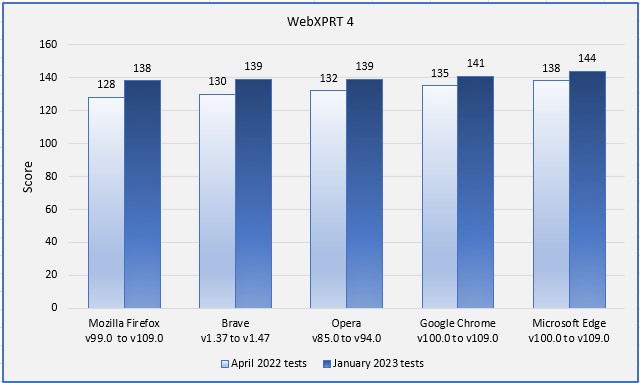In a past blog post, we discussed our plan to move several older versions of XPRT benchmarks to an XPRT archive page. Some of those legacy XPRTs still function correctly, and testers occasionally use them, but a few no longer work on the latest versions of the operating systems or browsers that we designed them to test. With the archive page, we can prevent potential confusion for new users who visit current XPRT pages, but still provide longtime users with continued access to old tests.
You can find more information about the XPRTs that we’ll be moving to the archive page here, but today, we want to let MobileXPRT users know that there’s a high likelihood that MobileXPRT 3 will be joining the list of archived XPRTs in the very near future. The Google Play Store has notified us that, due to evolving requirements for apps in newer versions of Android, we must update our MobileXPRT 3 app package to target an Android API level within one year of the latest Android release. If we don’t update the app to meet that requirement by November 1, users will no longer be able to access MobileXPRT 3 through the Google Play Store.
Though a small number of labs and reviewers still use MobileXPRT 3 to test phones and tablets around the world, we don’t feel current usage is high enough for us to justify committing resources to an update at this point. We had hoped that even if MobileXPRT 3 became inaccessible via the Google Play Store, it would still be possible to sideload the app for testing on newer Android devices. After experimenting with installation options in the lab, however, we think it’s likely that settings on devices running Android 11 and up will prevent both Google Play and sideload installations after November 1. The situation may change, but right now, we don’t expect any method to work after that date. If you try, you’ll likely encounter a message during the installation process that says, “This app was built for an older version of Android and may not work properly. Try checking for updates, or contact the developer.” If you attempt to continue the installation process after that message appears, the app will crash.
Both Android and Chrome developers know that the respective stores sometimes extend these types of deadlines. We hope that will be the case here, but we have no information that would lead us to anticipate an extension. If there is no extension, we will still make MobileXPRT 3 available for testing on older Android devices, but we will then have to move it to the XPRT archive page.
We’re grateful for everyone who has used MobileXPRT 3 in the past, and we apologize for any convenience this change may cause. If you have any questions or concerns about MobileXPRT 3 access, please let us know!
Justin













